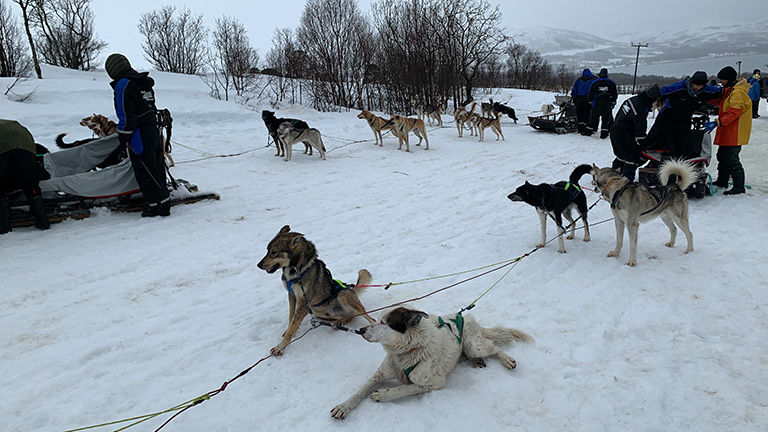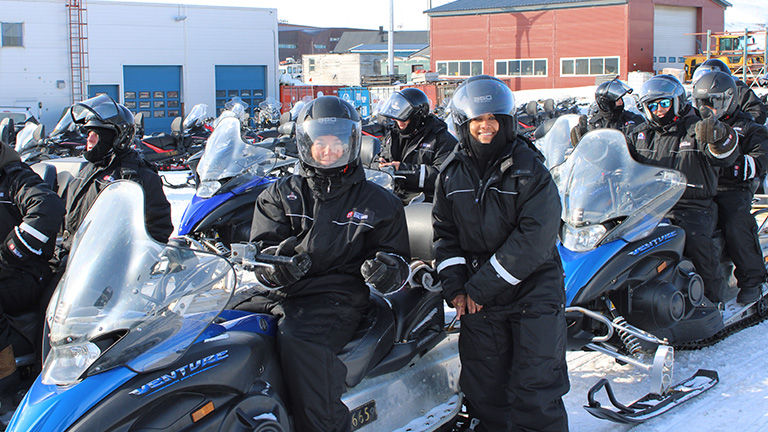The 2023 Tourism Cares Meaningful Travel Summit — held in Norway from April 18-23 — opened with a simple, but powerful, guiding principle: This is a safe space to share ideas, both good and bad, without judgement or shame.
The next few days would prove how important that sense of security is when it comes to discussions of sustainability, especially in an industry that is contributing to climate change as significantly as travel does. As companies of all different sizes, from various verticals within the industry, openly shared their successes, failures, lessons learned, ongoing challenges and future plans for more sustainable business practices, attendees learned from each other and discovered a true sense of community.
Sustainability Shouldn’t Be Competitive
In fact, participants agreed that one major takeaway from the conversations is that our industry must see sustainability without a sense of competition; specifically, tourism companies must prioritize collaboration to have any hope of making impactful change.
It’s a lesson the summit’s partners, Innovation Norway and the United States Tour Operators Association (USTOA) already understand.
“USTOA held our inaugural Sustainability Is Responsibility event last year, but we’re a relatively small organization,” said Terry Dale, president and CEO of USTOA. “So, I felt it was prudent to try and do something with Tourism Cares, because our families are the same — 85% of the people here are USTOA members. Our missions are similar, we have a responsibility to educate and hopefully inspire, so let’s try it together.”
85% of the people here are USTOA members. Our missions are similar, we have a responsibility to educate and hopefully inspire, so let’s try it together.
Other companies and organizations in attendance ranged from the Adventure Travel Trade Association to CIE Tours, Intrepid Travel, Elevate Destinations, Exodus Travels, Globus Family of Brands, Hurtigruten, Goway Travel, the Jordan Tourism Board, Tauck, the Singapore Tourism Board, The Travel Corporation and many more.
Here are a few more highlights and takeaways from the summit.
Creating a Business Culture With Sustainability in Mind
Day one of the summit kicked off with education sessions and interactive workshops led by Graham Miller, professor of sustainability in business at the University of Surrey. Topics of discussion included creating sustainable supply chains, creating an internal business culture of sustainability, measuring the impact of our activities, achieving greater positive impact for local communities and more.
Top Takeaway: We Need to Change How We Talk About Sustainability
A reoccurring theme of the day’s session was the need to change how the travel industry talks about sustainability. Using such a broad term can confuse or intimidate clients, and attendees noted that “sustainability” can even carry a message that an experience will be more expensive or less enjoyable, depending on a traveler’s pre-conceived notions. What’s more, in an era of greenwashing (the exaggeration of a company’s environmental efforts), brands often claim to be sustainable simply to jump on a perceived trend.
 Interactive sessions gave attendees the chance to share best practices and brainstorm solutions to current challenges.
Interactive sessions gave attendees the chance to share best practices and brainstorm solutions to current challenges.
Credit: 2023 Tourism CaresAvoiding the “s” word entirely can help travel sellers and providers avoid these issues. Instead, try to focus on the specifics behind the concept. Is a tour company working directly with local communities to put dollars into small businesses? Has a hotel implemented programs to reduce waste or provide renewable energy? These details — which explain what a company is doing and how it provides environmental or social benefit — can be shared with clients to help them understand how their booking choices make a difference.
A Day of Indigenous Education
Presentations and panels on day two centered around Norway’s Indigenous Sami People, examining how tourism can have both positive and negative impacts on Native communities. Local Sami individuals, from tourism business owners to academics, were on hand to share their experiences and offer wider context about Indigenous tourism in Norway and elsewhere.
Top Takeaway: Check Your Expectations at the Door
While discussing topics such as cultural appropriation and the exotification and misrepresentation of Indigenous cultures, Sandra Marja West of the Sami Council asked a question that she herself struggles with: “Do we present what we want to, or what is expected of us?”
More specifically, do Indigenous cultures share their true identities with others, or some version of what others expect them to be? And what role does the tourism industry play in forming those expectations?
“This session helped me understand the definition of authenticity,” said Robin Tauck, co-owner of Tauck and chairman of Tourism Cares. “We [in the tourism industry] have to really analyze the performative expectation that many people have regarding Indigenous culture.”
We [in the tourism industry] have to really analyze the performative expectation that many people have regarding Indigenous culture.
In-Destination Experiences in Tromso, Norway
As part of the Tourism Cares program, attendees had a chance to take part in local experiences in the host destination of Tromso, Norway, including a visit to the Full Steam museum and restaurant (home to an exhibit dedicated to the Sea Sami People) and a dog-sledding excursion with Tromso Villmarkssenter.
 A dog-sledding excursion demonstrated how a shorter winter season puts local businesses at risk.
A dog-sledding excursion demonstrated how a shorter winter season puts local businesses at risk.
Credit: 2023 Kelly Rosenfeld“We specifically chose Norway as our host because it’s a destination where they have a focus on sustainability and are trying to create a balance between promoting tourism and yet conserving their natural resources,” said Greg Takehara, CEO of Tourism Cares. “When we’re here, we really see the fragility of the environment and hear from local voices.”
Top Takeaway: Local Experiences Are the Best Teacher
It’s one thing to talk about sustainability issues in theory, but it’s quite another to be confronted with the reality of climate change. During the dog-sledding activity in particular, attendees learned about the shorter winter season and how it’s putting local businesses at risk.
“Climate change is everywhere, but you can see it very immediately here,” Tauck said. “When I posted about the dog sledding, most people were commenting, ‘Dog sledding in the Arctic — so fun.’ But to me, all the slush that we were going through, and all the rain, as we talked about how the season has changed … my thinking and my post were more about, ‘We’re here for climate action and we got out in the field today to see and hear what’s happening.’ Sharing that was, to me, the reason for doing the dog sledding.”
Climate change is everywhere, but you can see it very immediately here.
A Visit to Svalbard
The final two days of the Tourism Cares Meaningful Travel Summit brought attendees to one of the most fragile places on the planet: the Arctic Circle. During a visit to Svalbard, activities included snowmobiling, a guided tour of an ice cave and a presentation from Visit Svalbard about the complexities of tourism in such an extreme and remote destination.
 The itinerary in Svalbard included a snowmobiling excursion to see how locals get around, and experience the natural beauty of the area.
The itinerary in Svalbard included a snowmobiling excursion to see how locals get around, and experience the natural beauty of the area.
Credit: 2023 Tourism CaresTop Takeaway: Marketing Real Experiences Matters
Sara Nordell Borchgrevink, sustainability manager for Visit Svalbard, pointed out that there is often a difference between the romanticized vision a traveler might have regarding a destination and the reality of being there. In Svalbard, preparing travelers for the real experience they will have is a top priority. For example, the organization’s marketing materials only show polar bears from afar, reflecting the safe distance humans must maintain during a polar bear sighting.
The goal, she says, is to attract “well-prepared guests” who will already know how to travel responsibly once they reach the destination.
It’s a good lesson for travel sellers — and travelers themselves — to remember. A little education can go a long way in helping travelers treat local environments and communities with the respect they deserve, better protecting them along the way.
“We need to have respect for the places we go, we need to hear and understand the local customs and we have to be appreciative of them,” Takehara said. “Every time we travel, we should be thinking about the fact that we are going into someone’s home.”